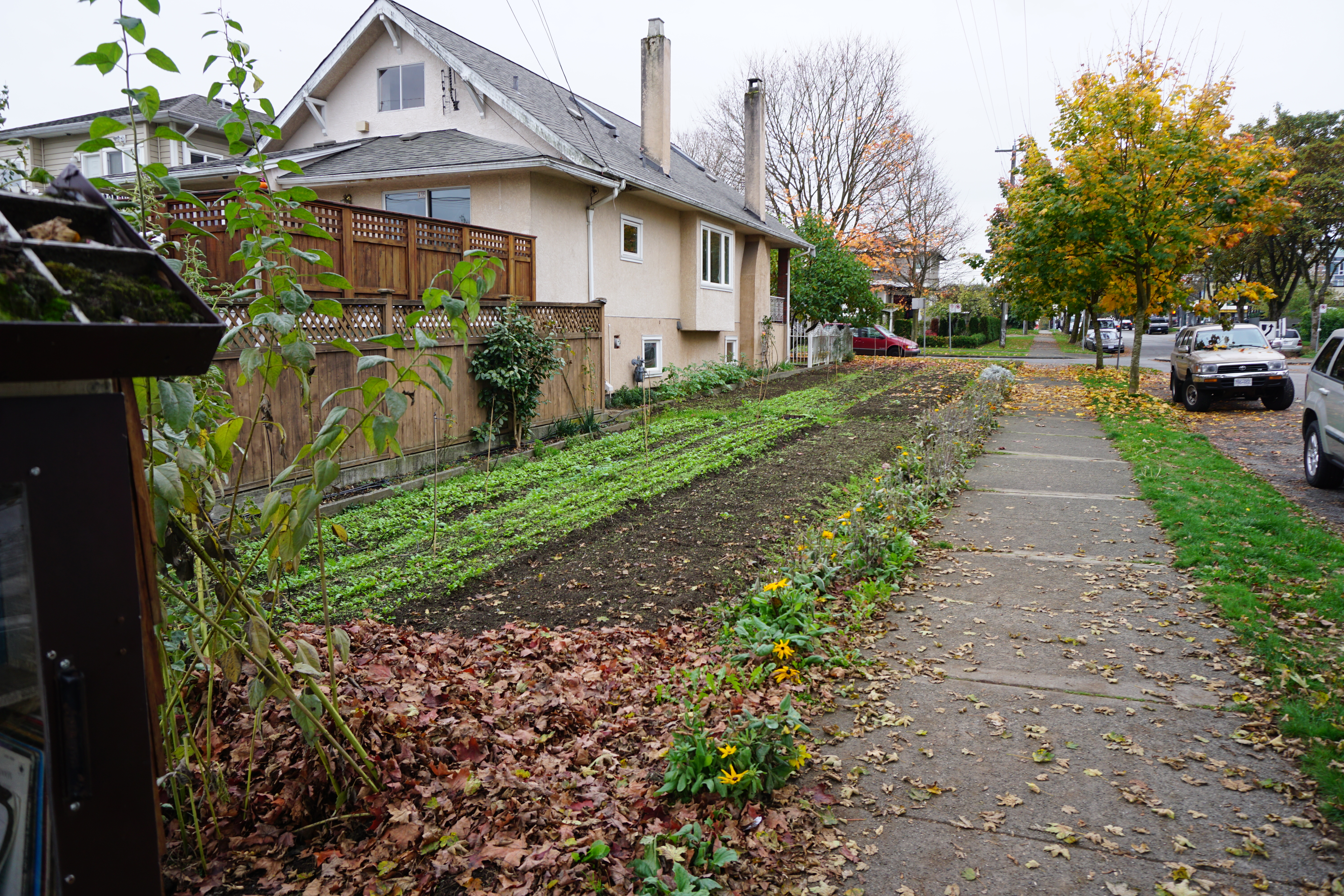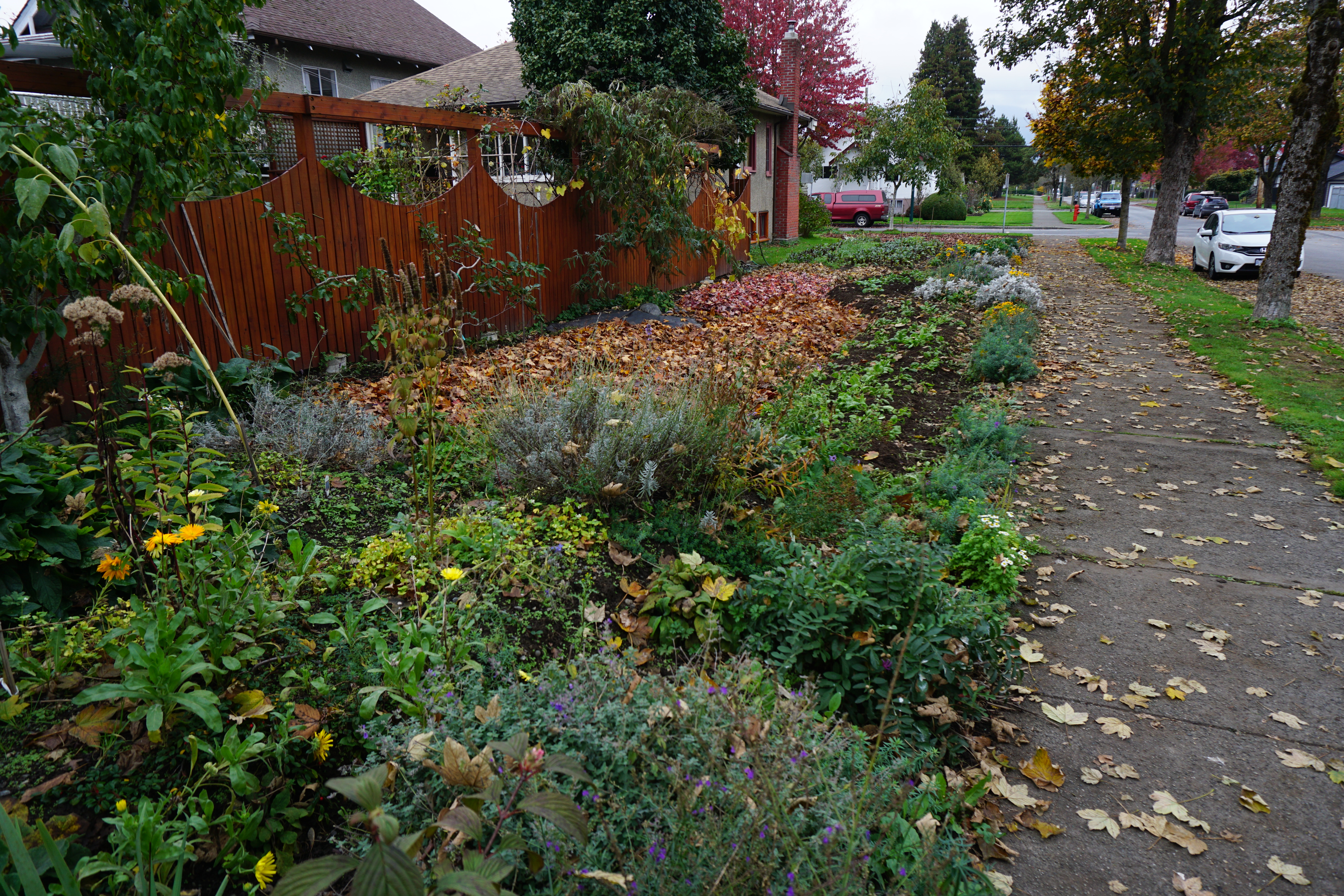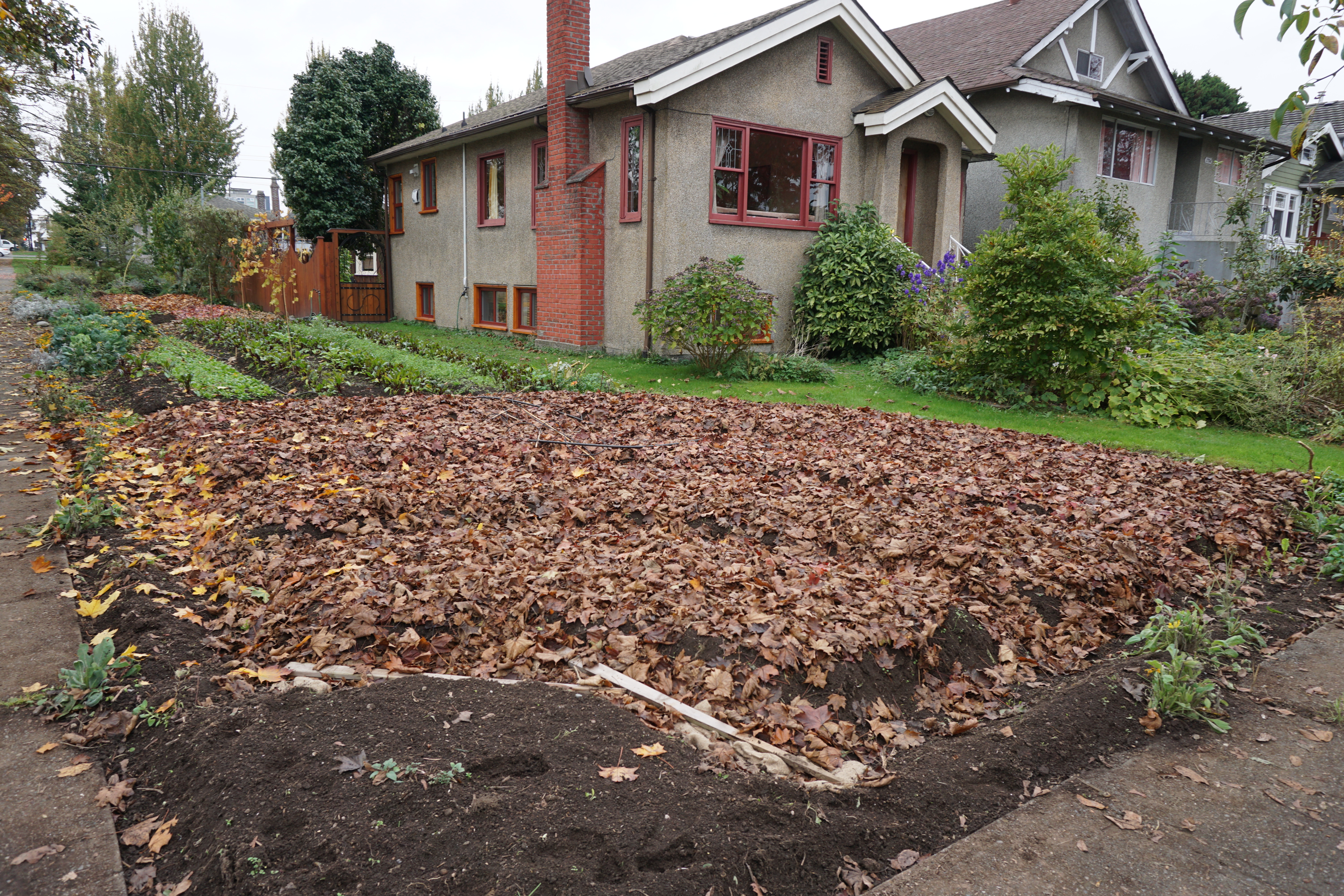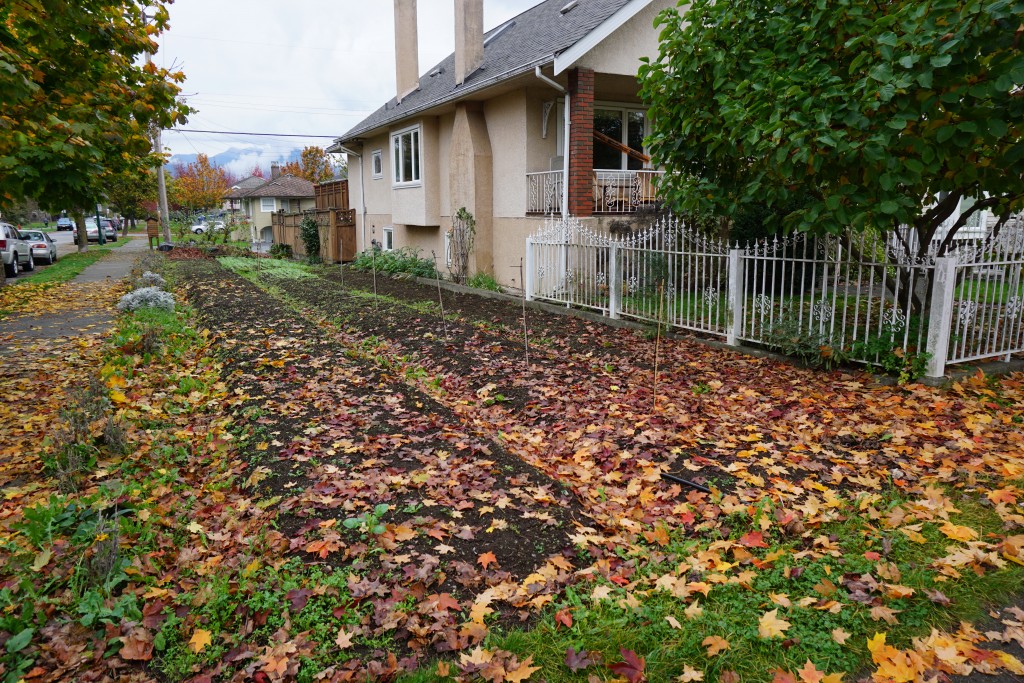What
What happens when six LFS 350 students go out on the street to gather stories from community members about their experiences with and feelings about urban food production?

This week our main objective was to gather stories from people who were out and about in the Hastings-Sunrise community of Vancouver, where ICF operates two of their farms. With the farming season coming to an end and the gardens being prepared for the winter ahead, we recognized that our time frame to talk with people is becoming limited. Furthermore we wanted to continue the process of documentation and synthesis of themes of the conversations that we have already conducted. Realistically, urban farming is not on the agenda of most people; as LFS students we were aware of our own bias, but now we need to learn how to address it.
In groups of two, we approached neighbors, landowners and people walking on the sidewalks in close proximity to the two farm sites, aiming to engage them in a dialogue about food production on lawns in their community. We were able to achieve this objective, and had a number of insightful conversations with community members. However, we encountered a number of obstacles, learning very quickly that engaging people in the absence of context can be very difficult.
So What
Based on our first run in approaching community members outside of the CSA program, it turns out not everyone has the same level of interest in food and urban agriculture as LFS students. The significant disengagement levels reflect the knowledge and relationship gaps currently existing between ICF, its stakeholders, and both current and potential community members. As a result this raises a few important questions: What is our educational system teaching at the elementary and high school level in regards to gardening and farm production (i.e. school gardens), how can ICF effectively provide resources and tools for aspiring urban farm owners, and who is most and least likely to benefit from these opportunities? Similarly to Barber’s lack of knowledge of the natural behaviour of his geese; our most profound issue is more prevalent when we currently do not understand the dynamics, social or structural levels, and interrelationships of ICF’s food system and its members. There is a barrier between what we wish to extract from community members and their willingness to share their (lack of) knowledge about the matter. In answering the previously mentioned questions, the importance lies in focusing less on those who benefit most and rather more on those who believe they are unlikely to benefit from their services.
Now what
Ultimately, we were able to engage with several community members in hearing their opinions and experiences with ICF or urban food production. However, there were also many moments in which we struggled to attract the interest and time of pedestrians resulting in the conclusion that we must devise a more accommodative way to approach them. Based on our last discussion with Carrie, we will be using more innovative strategies such as reaching out beyond the borders of the two farms through ICF’s social media platforms. Like any approach to politics and policy making, it is meant to benefit the public, reaching the public requires more effort than developing a personally justified solution. It is essential for us to increase the public awareness of the importance of urban agriculture. Although this week made it apparent that gathering public opinions is difficult, every insight and interaction will have a rippling effect in the future. By using more innovative ways, we want to collect stories from more community members, local restaurants, Hastings Elementary Community School and Hastings Community Center. Next week specifically, we will be meeting with chefs that Camil recommend as the restaurant that they are employed at use food sourced from ICF. This will ensure a conversation rather than entering an area not knowing whether or not we will come away with any data at all such as trying to talk to the community the past week. Chefs are also great because of their indirect connection to the community. They will be able to provide an alternate pathway for us to connect to the community.
In the broadcast, Barber mentioned the way of Eduardo raising his geese was in a “nature’s way”. We can apply this “nature’s way” in our project by focusing on people who live in the neighborhood of the community gardens in order to identify the reasons why people have little interest in urban agriculture in their community, what the food consumption trend in the neighborhood is and what barriers exist to restricting of urban farming in the area. We are going to use two community gardens in Hastings-Sunrise Community as an example to provide some suggestions and potential food policies in order to improve urban agriculture in City of Vancouver.



